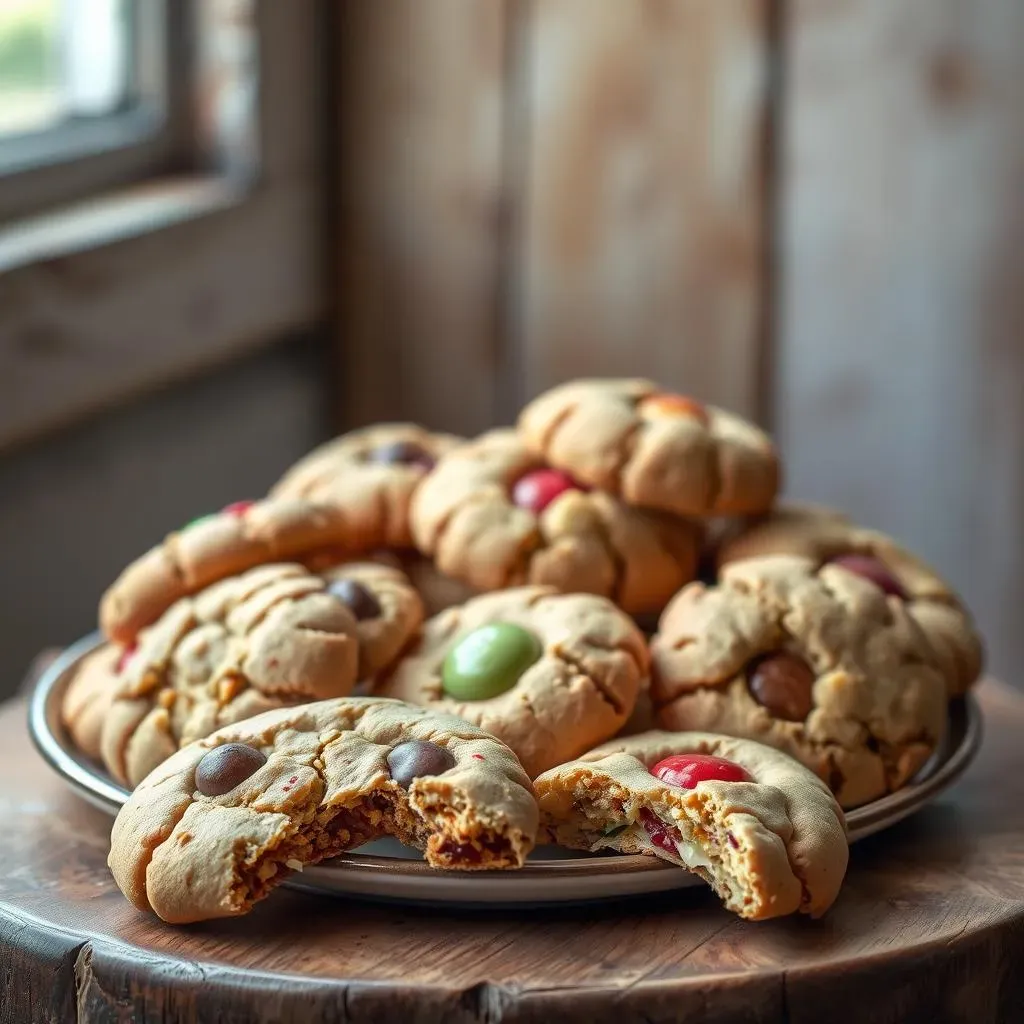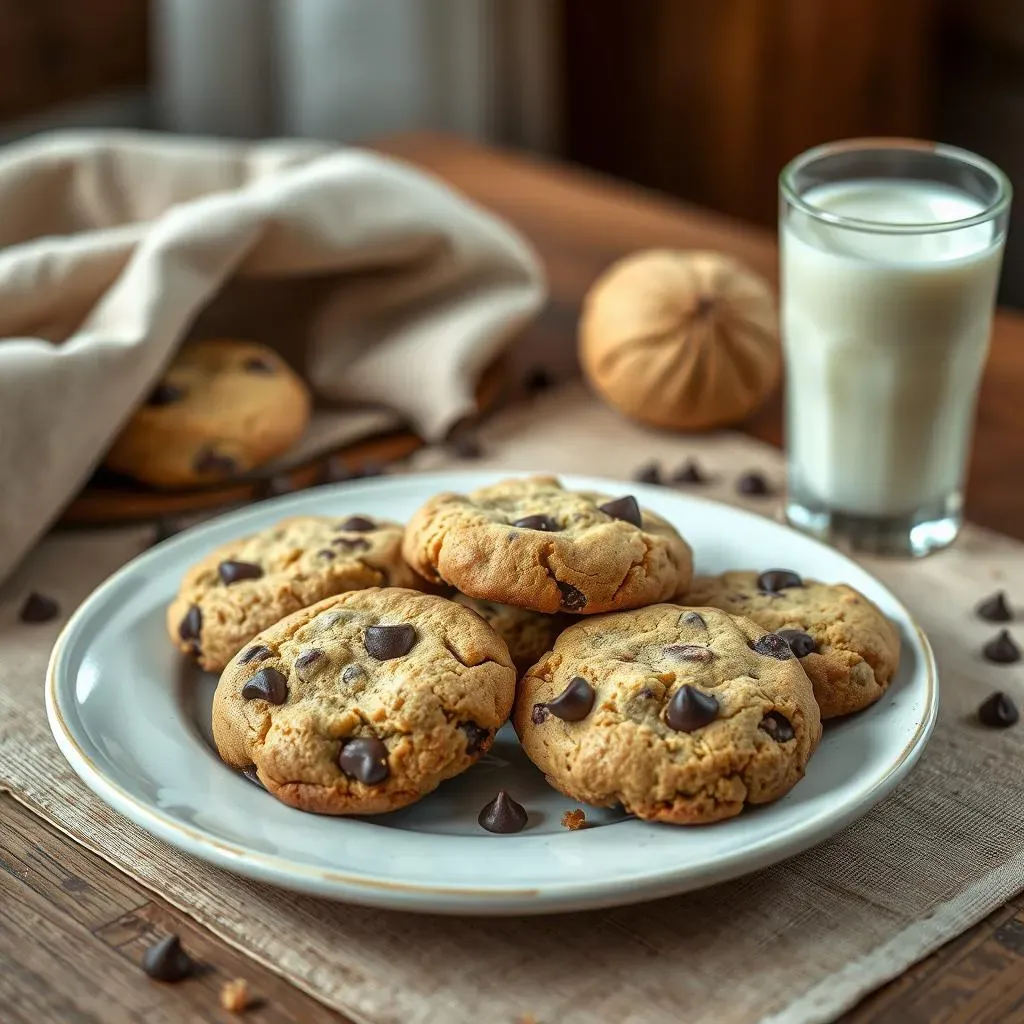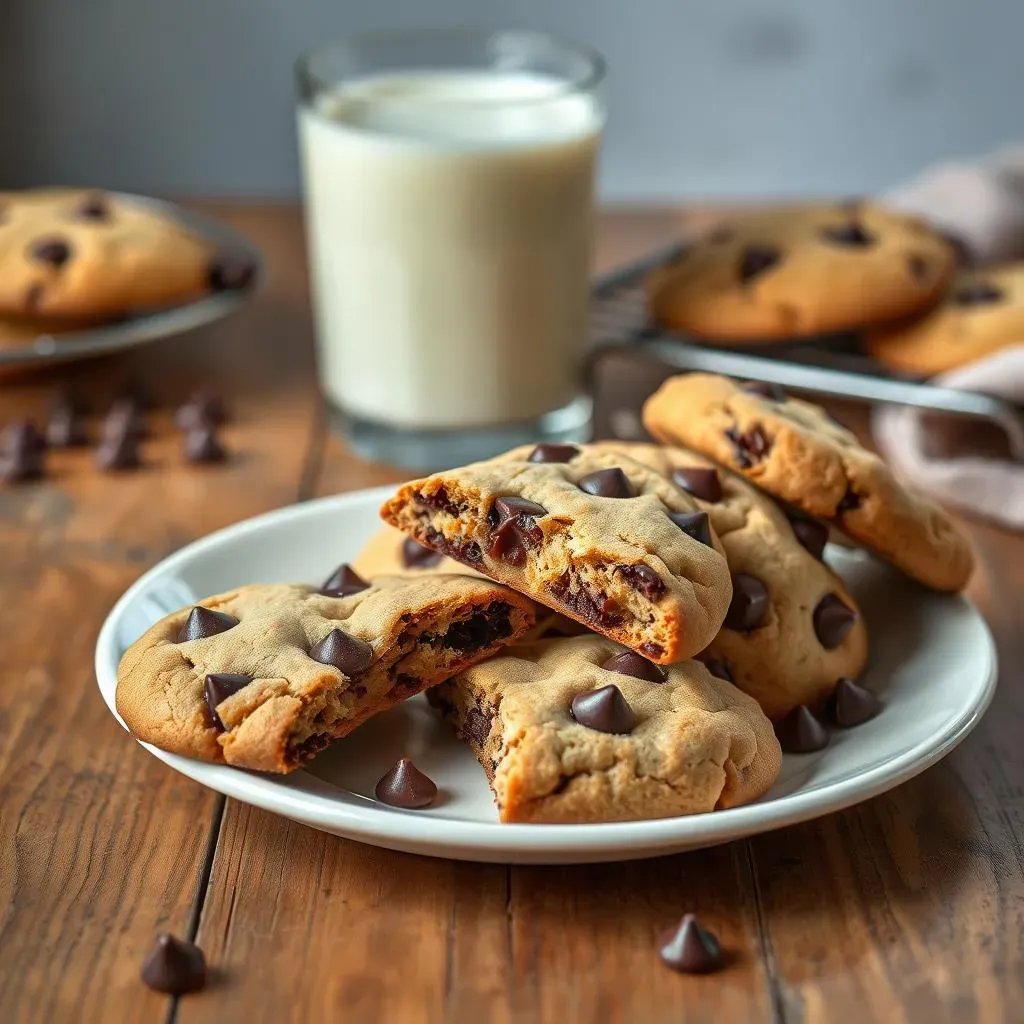Table of Contents
Craving those warm, gooey chocolate chip cookies but worried about the calories and fat? Don't worry, you don't have to sacrifice taste for health! This article is your guide to baking incredibly delicious *healthy low fat chocolate chip cookies*. We'll explore clever ingredient swaps that slash fat and calories without compromising texture or flavor. Learn expert tips and tricks to achieve that perfect chewy cookie every time, even with reduced fat. We'll also unleash your creativity with exciting variations, moving beyond the classic chocolate chip to create unique and satisfying treats. Finally, we'll cover the best ways to store your cookies so you can enjoy them for days (or even weeks!). Get ready to bake up a batch of guilt-free goodness – your taste buds will thank you!
Ingredient Swaps for a Healthier Cookie

Ingredient Swaps for a Healthier Cookie
Reducing Fat with Clever Substitutions
Let's face it, butter is delicious. But it's also packed with saturated fat. The good news? You can drastically reduce the fat content of your cookies without sacrificing that melt-in-your-mouth texture. One of my favorite swaps is using applesauce! It adds moisture and sweetness, binding the ingredients beautifully. For every cup of butter, you can usually substitute ¾ cup of unsweetened applesauce. You might need to adjust the amount of flour slightly to achieve the right consistency. Experiment and see what works best for you! Remember, even small changes can make a big difference in the overall healthiness of your cookies.
Another fantastic option is to replace some of the butter with mashed banana. Bananas bring natural sweetness and moisture, and they add a subtle fruity flavor that complements chocolate chips wonderfully. Try experimenting with a ratio of half butter, half mashed banana to start. If you want to go further, you can find many recipes that use only banana as a fat source! Don't be afraid to get creative; it's all part of the fun of baking.
- Low-fat Oatmeal Chocolate Chip Cookies
- Low-Fat Chocolate Chip Cookie Recipe
- Best Low-Fat Chocolate Chip Cookies
Sweetening Up Your Life (Without the Guilt)
Sugar is another area where we can make some smart swaps. While a little sugar is okay, reducing it can significantly impact the overall calorie count of your cookies. One popular technique is using less granulated sugar and supplementing with natural sweeteners like maple syrup or honey. These add a complex flavor that elevates the experience beyond plain sugar. Keep in mind that honey and maple syrup are still calorie-dense, so use them sparingly. A good starting point is to reduce granulated sugar by 25% and replace it with an equal amount of honey or maple syrup. Taste as you go – this is your chance to perfect your cookie recipe!
Alternatively, you can explore sugar substitutes like stevia or erythritol. These are low-calorie options that can help keep your cookies on the healthy side. However, they can have a slightly different taste, so you might need to adjust the recipe to compensate. Some people find that combining a small amount of granulated sugar with a sugar substitute delivers the best flavor. Don’t be afraid to test different combinations until you find your perfect balance.
Sweetener | Calorie Count (per tbsp) | Flavor Profile |
|---|---|---|
Granulated Sugar | 45 | Sweet, simple |
Honey | 64 | Sweet, floral |
Maple Syrup | 52 | Sweet, buttery |
Baking the Perfect LowFat Cookie: Tips and Tricks

Baking the Perfect LowFat Cookie: Tips and Tricks
Mixing and Baking for Success
So, you've swapped out your ingredients for healthier options. Now, let's talk technique! Creaming together your fats (even if it's applesauce and banana) is still key to getting that light and airy texture. Don't rush this step; take your time to properly incorporate the air. It's like giving your cookies a little workout – the more air you whip in, the fluffier they'll be! Think of it as a tiny, delicious soufflé. Once your wet ingredients are combined, gently fold in your dry ingredients. Overmixing develops gluten, which can lead to tough cookies. We want soft and chewy, remember?
Baking time is crucial. Start checking your cookies a few minutes before the recipe suggests. Every oven is a little different, so relying solely on the recipe time isn't always the best strategy. Use a toothpick or knife to check for doneness – if it comes out clean, your cookies are ready. If you're aiming for super-chewy cookies, remove them from the oven while they still look slightly soft in the center. They will continue to set as they cool. And don't forget the most important part: let those cookies cool completely on the baking sheet before transferring them to a wire rack. This prevents them from becoming soggy.
Chilling for Better Cookies
This is a game-changer, especially for low-fat cookies. Chilling your cookie dough for at least 30 minutes (or even overnight!) before baking helps prevent spreading. Low-fat cookies tend to spread more than their higher-fat counterparts, so chilling is your secret weapon to achieving perfectly sized, aesthetically pleasing cookies. Think of it as giving the dough time to relax and firm up – it’s like a mini-meditation session for your batter! The chilling process also allows the flavors to meld together, resulting in a more intense and satisfying cookie experience. Trust me on this one; the extra wait is worth it.
While chilling, make sure your dough is properly wrapped to prevent it from drying out. You can use plastic wrap or place it in an airtight container. Once chilled, scoop your dough onto a baking sheet, leaving enough space between each cookie to prevent them from merging during baking. This is especially important when baking low-fat cookies because they’re more likely to spread than higher-fat versions. A little extra space will ensure that every cookie has its own personal space to bake and expand happily. This is your final chance to ensure a perfect result.
Chilling Time | Cookie Result |
|---|---|
30 minutes | Slightly less spread |
1 hour | Noticeably less spread |
Overnight | Minimal spread, enhanced flavor |
Delicious Variations on a Classic: Beyond Chocolate Chips

Delicious Variations on a Classic: Beyond Chocolate Chips
Nutty Delights
Let's get nutty! Adding nuts to your low-fat cookies adds texture, flavor, and healthy fats. Walnuts, pecans, and almonds all work beautifully. Just chop them roughly and fold them into the dough before baking. A sprinkle of chopped nuts on top before baking adds a nice visual appeal too! Remember to adjust baking time slightly, as nuts can sometimes affect the browning process.
For an extra special touch, consider using different types of nuts in your cookies. A mix of walnuts and pecans offers a unique flavor profile, while adding slivered almonds provides a satisfying crunch. Experiment with different combinations to create your signature cookie. Don't be afraid to try something unexpected – you might discover your new favorite cookie!
Fruity Fun
Who says cookies have to be just chocolate and dough? Dried fruits like cranberries, raisins, or chopped apricots add sweetness and a burst of flavor to your low-fat creations. Remember that dried fruit is naturally sweeter than fresh fruit, so you might want to reduce the amount of added sugar in your recipe. The natural sweetness of the fruit will enhance the overall taste of the cookies.
Consider incorporating other fruits into your low-fat cookies. Blueberries, raspberries, and chopped cherries all offer a unique twist on the classic chocolate chip cookie. If you're feeling adventurous, try adding a combination of fruits and nuts for a truly decadent treat. The possibilities are endless – let your imagination run wild! Don't forget to check for doneness a little earlier than usual, as the added moisture from fruit can affect baking time.
Fruit | Flavor Profile | Potential Concerns |
|---|---|---|
Cranberries | Tart, sweet | May cause cookies to spread |
Raisins | Sweet, chewy | Can become too dense |
Blueberries | Sweet, tart | May burst during baking |
Storing and Enjoying Your Healthy Cookies healthy low fat chocolate chip cookies Satisfy your sweet tooth guiltfree! Discover surprisingly delicious lowfat chocolate chip cookies that won't wreck your diet. ```

Storing and Enjoying Your Healthy Cookies healthy low fat chocolate chip cookies Satisfy your sweet tooth guiltfree! Discover surprisingly delicious lowfat chocolate chip cookies that won't wreck your diet. ```
Keeping Your Cookies Fresh
Proper storage is key to keeping your healthy low-fat chocolate chip cookies at their best. Once completely cool, store them in an airtight container at room temperature. This prevents them from drying out and keeps them tasting delicious for up to a week. Think of it as giving your cookies a cozy little home, protecting them from the harsh elements of the outside world. An airtight container is your cookie's best friend!
For longer storage, you can freeze your cookies! Place them in a freezer-safe container or bag, and they'll happily keep for up to three months. Freezing locks in freshness, so you can enjoy a delicious, freshly baked cookie experience even weeks later. Just remember to let them thaw at room temperature before enjoying – this allows the cookies to regain their optimal texture. Freezing is a fantastic way to enjoy your cookies for a longer period.
Enjoying Your Baked Goods
Now for the best part – eating your cookies! Serve them warm, straight from the oven, for a truly indulgent treat. The warm, gooey center paired with the slightly crispy edges is a delightful combination. You can also enjoy them at room temperature, allowing you to savor the flavors without the intense heat. Each method offers a unique sensory experience.
Pair your cookies with a glass of cold milk or a cup of hot tea or coffee. The contrast in temperatures and flavors creates a harmonious balance. You can also get creative and add a scoop of low-fat vanilla ice cream for an extra decadent touch. This simple addition elevates the cookie to a whole new level of deliciousness. Experiment with different pairings to find your personal favorite.
Serving Temperature | Flavor Profile | Texture |
|---|---|---|
Warm | Intense, gooey | Soft, chewy |
Room Temperature | Subtle, balanced | Slightly crisp, chewy |
